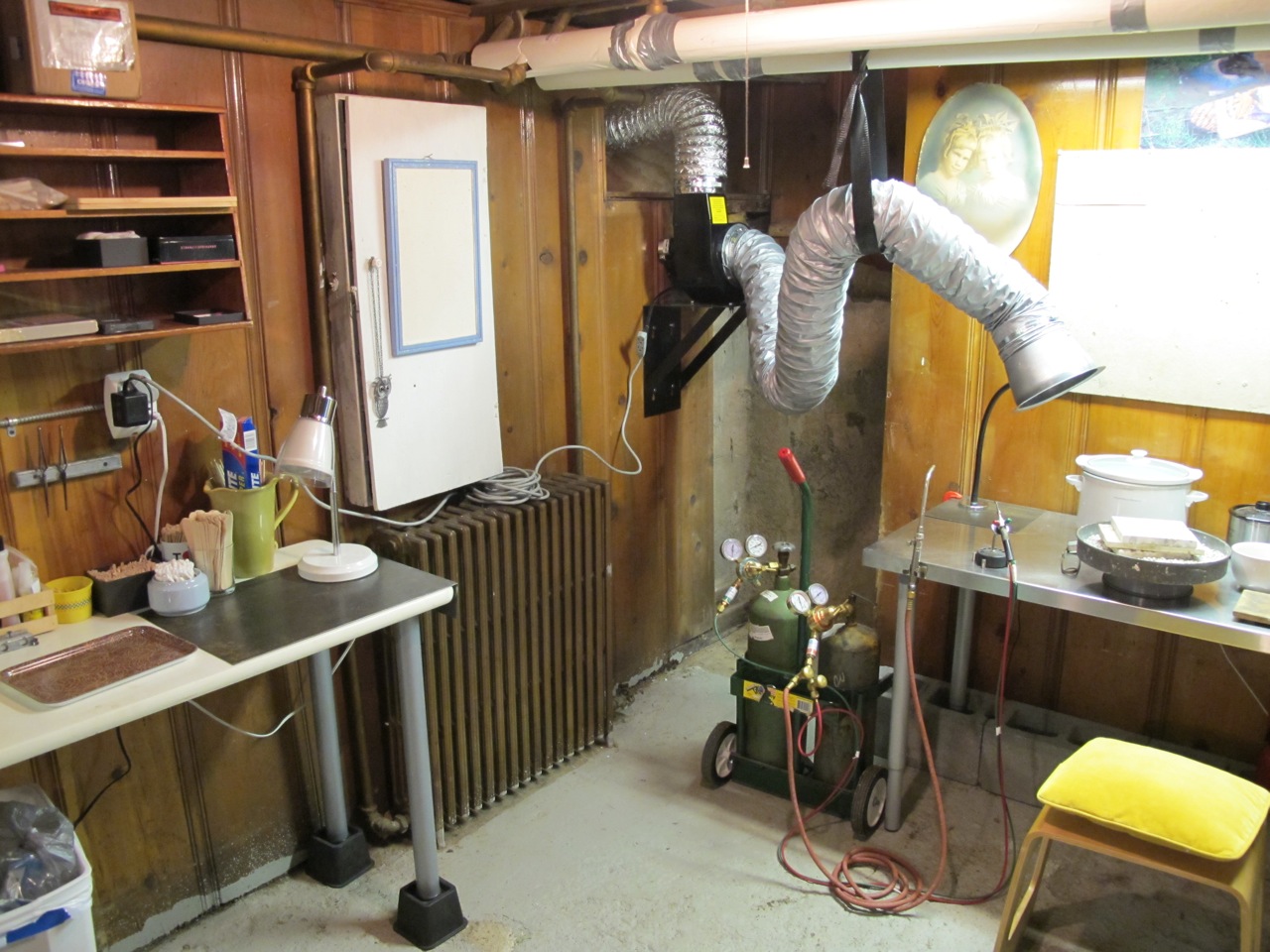|
If all of my work was 3/16" steel or larger and I didn't give a poo poo about how my weld's looked, a 225 would be fine.
|
|
|
|

|
| # ? May 27, 2024 02:37 |
|
I can't imagine I would do anything that heavy for the large volume of what I would like to try doing. I was just under the impression that a 225 was a very flexible welder that really covers the range well and people seem to like them so thought it would be a good buy. What are some that you all recommend?
|
|
|
|
Miller Dialarc, Lincoln Idealarc, Hobart Stickmate as a compromise. Basically anything that is not a tapped transformer or made in China.
|
|
|
|
AbsentMindedWelder posted:Miller Dialarc, Lincoln Idealarc, Hobart Stickmate as a compromise. Basically anything that is not a tapped transformer or made in China. I looked these up and 2/3 are several thousand dollars. These are considered "I just wanna gently caress around and maybe make something"-class welders? What is wrong with tapped transformers exactly? I've seen a few people now say to avoid them. Edit: Also thanks all for the advice in general. I have no idea what I am doing, but would like to learn as welding is something I always thought was really cool and I have always been interested in doing. Crazyeyes fucked around with this message at 03:22 on Apr 2, 2016 |
|
|
|
I'm not suggesting you buy a new welding machine. You can get these for a few hundred bucks on craigslist. The tapped transformer provides limited adjustablility. Almost all the time the setting you need is somewhere in between the taps so you are either too cold or too hot.
|
|
|
|
AbsentMindedWelder posted:I'm not suggesting you buy a new welding machine. You can get these for a few hundred bucks on craigslist. The tapped transformer provides limited adjustablility. Almost all the time the setting you need is somewhere in between the taps so you are either too cold or too hot. Thanks for the explanation. That makes sense now. What about Miller Thunderbolts? I understand they are pretty much the same thing as the Hobart Stickmates. Is there truth to that statement?
|
|
|
|
Yeah they are the same machine. I've never used one personally but it appears to have OK specs.
|
|
|
|
So a logistics question: I have no 220v in my garage. I wouldn't have a huge issue running wire from the breaker, but it is on the compete other side of tyre house, in the basement, and separated from the garage by a cement slab. This necessitates running wire corner to corner of the foundation, then up to the attic, then back across the house and down through another crawlspace. About 150ft of wire overall and a LOT of pain in the rear end. But there may be another option... Washer and drier have a dedicated 220 line on the other side of the wall from my garage. If I tapped that line and ran some wire through to the garage I would have a possible outlet. Question is if I could put a switch to regulate which outlet is hot (and avoid blowing the breaker when both run simultaneously). Also don't know if that is code or if it's grossly illegal.
|
|
|
|
Crazyeyes posted:So a logistics question: This is a question for the wiring thread.
|
|
|
|
Crazyeyes posted:I can't imagine I would do anything that heavy for the large volume of what I would like to try doing. I was just under the impression that a 225 was a very flexible welder that really covers the range well and people seem to like them so thought it would be a good buy. Don't get too hung up on getting a really expensive machine for hobby use. I bought a relatively inexpensive chinese welder and have done 95% of my work with it, it works off of 120v just fine. Duty cycle is your friend, look for that.
|
|
|
|
Cleaned up the ways and coated them with Vactra #4. I didn't get pics of it but I pressed the 2 brass nuts out of the holder and cleaned everything up good with kerosene. Gib is also installed. I forgot to put on the 3 plates that move with the saddle and keeps chips from going in the knee, but turned out to be a good thing as that'll make it easy to adjust the backlash take-up screws. Gotta take stuff apart anyway to install the oil lines later.  At the shop today I came to the conclusion that it does indeed have power feed for both X and Y. When I came home I was able to speak with the previous owner on the phone who confirmed this and gave me a few tips. He said if I have any other questions to let him know. I didn't actually install the power feed boxes as I still have to go work on them them.  When the power feed unit is installed the housing spins around and looks like this.  Slung Blade posted:Don't get too hung up on getting a really expensive machine for hobby use. I bought a relatively inexpensive chinese welder and have done 95% of my work with it, it works off of 120v just fine. In the mid-atlantic region where Crazyeyes and I live there is no reason to buy a Chinese machine.... there are too many used American made machines lying about. If you don't have access to those used machines in certain areas of the globe then getting a Chinese welder may be the best bet. You are right about duty cycle. My Lincoln Idealarc can do 150 amps at 100% duty cycle. (250 amps at 30%, 200 amps at 40%) I've never used more then 130 amps on that machine so I can weld all day long as much as I want without worry. AbsentMindedWelder fucked around with this message at 01:36 on Apr 3, 2016 |
|
|
|
Leperflesh posted:The central heat then propagates outwards, and if it's hot enough, it tempers as it goes. Hold the metal out in the air for just the right amount of time, and then back into the quench bucket. Bam, you have a tempered blade! Actually J. Neilson tempers the blades overnight, according to participants posting over at bladeforums. Question for you metal lords. Playing around today with some unknown carbon steel which is very hard, almost but not quite file hard and somewhat brittle. I wanted to see if could soften it just a bit so I put some samples in the oven at various temperatures and then tested them again. Now it's all subjective, I just clamp the pieces in a vise and bend them with Channellocks until they break. But there was no discernable difference after having them in the oven for an hour. I can only bend it 1 or 2 degrees then snap! First piece turned blue, second is purplish. What went wrong? Or what is going on? Why didn't they soften and become more flexible? 
|
|
|
|
I'm guessing it has a very high carbon content, somewhere in between tool steel and cast iron. Where did this mystery metal come from, what was the prior application and what are you trying to do with it?
|
|
|
|
I'm building my basement shop right now, and b/c i'm working with an unfinished basement i can do it just how I like. I think I wanna put an ersatz fume extractor/targeted ventilation in. I'm thinking something approximately like this- except I was just gonna use an in-line duct fan, because I already have one, instead of that squirrel-cage blower thing. what hideous flaws are apparent in this plan
|
|
|
|
AbsentMindedWelder posted:I'm guessing it has a very high carbon content, somewhere in between tool steel and cast iron. Where did this mystery metal come from, what was the prior application and what are you trying to do with it? Looks like a carbide toothed saw blade. Shouldn't be that hard, though. Edit: Regular kitchen oven? I wouldn't think that would get hot enough. One Legged Ninja fucked around with this message at 14:42 on Apr 3, 2016 |
|
|
|
I might be misremembering, but it is possible to temper at like the 500F range and make the piece even more brittle. I think it's a sweet spot where if you temper it a bit hotter or a bit cooler, you'll soften the steel. That could be happening. I don't know the times needed for that. The color of the steel kinda points towards it being in that temperature range though. NE: Wikipedia at least kinda mentions this. Still don't know that that's what's happening here, but maybe? God, it's been years since I took a materials science class.
|
|
|
|
Ambrose Burnside posted:what hideous flaws are apparent in this plan Well, for one, I wouldn't emulate the guy keeping acetylene in his loving house. Other than that, a fan like that not only requires a good access to the outside to exhaust, but you also need plenty of fresh air capacity to rush back in to replace the smoke. If you have an older house you're probably fine, newer ones are supposed to be sealed up a little better - so you might have to cut some holes or open some windows when you're down there. Put sound deadening in the walls or acoustic deflectors on them so your family doesn't want to murder you.
|
|
|
|
wormil posted:Question for you metal lords. Playing around today with some unknown carbon steel which is very hard, almost but not quite file hard and somewhat brittle. I wanted to see if could soften it just a bit so I put some samples in the oven at various temperatures and then tested them again. Now it's all subjective, I just clamp the pieces in a vise and bend them with Channellocks until they break. But there was no discernable difference after having them in the oven for an hour. I can only bend it 1 or 2 degrees then snap! First piece turned blue, second is purplish. What went wrong? Or what is going on? Why didn't they soften and become more flexible? It could be a couple of different things. First, one hour of tempering for a piece of steel that thick (looks to be about 3/16" ?) might not actually end up doing enough. Try 3 hours at 475 degrees and see if it makes a difference. Second, it's possible that the steel you're using is an alloy that doesn't temper easily, or not at the temperatures you're using. If that's the case, unless you can determine the exact alloy you're going to have a hard time getting it to a workable state.
|
|
|
|
Hit that steel with a grinder and look at the spark pattern.
|
|
|
|
Slung Blade posted:Well, for one, I wouldn't emulate the guy keeping acetylene in his loving house. yeah, there's a lil casement window in there a good distance away from where the exhaust will vent that I'll be able to crack. and the ceiling is getting insulated to poo poo- idk if it's enough but my dad's worked in construction for approximately forever and seems confident that what we're doing will be adequate. Find anything good at the show, Brek?
|
|
|
|
Cleaned up the ways for the table, oiled them up, lifted it in with the crane, and then installed the gib. Had to chase the threads... the ones on the left side were worse then the right.  Left side lead screw support installed. I got some Simple Green for cleaning the aluminum in the ultrasonic cleaner as it's not safe in the purple stuff.  Right side installed, this supports the power feed box. The spring-pins that align this part to the table were missing. I'll add some 5x28mm roll pins to the shopping list.  The dials for the table cleaned up OK. The on the left was very heavily rusted I had that in evapo-rust overnight.  Brake shoes and handles installed for the table . These handles have splines that engage the screw and a spring so you can reposition the handle wherever you want it. The handle all the way on the left which locks the saddle has stripped splines so it's just sitting in there right now. I'll have to replace it. The knee, in addition to the lock on the front of the knee, has two brake shoes itself. I have the steel threaded portion but missing the handles, so I'll add them to the the needed parts list.  I left at it that for today... didn't feel like cleaning the lead-screw today which is the next step. Here's what the mill looks like so far. Mid week I'll probably have this "phase" of the project wrapped up and leave the power-feeds, oil-system, coolant system, and final adjustment till later. I'll then move on to the motorcycle and building shelving in the shop. 
|
|
|
|
I'm looking at Snap-on MM250SL on CL.(backup of ad) Snap-on catalog The marks against I see online tend to be it's overpriced and parts aren't available. I found parts. The price is much less than catalog. Is this a good deal? Related, but separate question. Snap-on sells a TIG conversion kit and a spool-gun for aluminum MIG. How specific are these parts to individual welders? Miller makes a much more affordable spool gun and TIG torch. The pictures lead me to believe they'd be compatible:   The only reason I'm thinking about this one in specific is the fact it's available on my local craigslist. If I had to buy Snap-on specific accessories, it sort of ruins the fact it's affordable out of the gate. I'm aware it's 220 and have the capability for it. e: This is for my local bike co-op. We're just welding bikes together and things to them. I can't get them to throw down for a nice machine(yet), so if it's not a used machine like that, I'm probably getting a cheap 120 Chinese "mig" instead. HarmB fucked around with this message at 03:01 on Apr 4, 2016 |
|
|
|
Please keep posting the restoration of the mill. This poo poo is like porn to me
|
|
|
|
mjan posted:It could be a couple of different things. First, one hour of tempering for a piece of steel that thick (looks to be about 3/16" ?) might not actually end up doing enough. Try 3 hours at 475 degrees and see if it makes a difference. Second, it's possible that the steel you're using is an alloy that doesn't temper easily, or not at the temperatures you're using. If that's the case, unless you can determine the exact alloy you're going to have a hard time getting it to a workable state. It's less than 1/8" thick and is a piece of sawblade, 20ish years old, at least. Unlikely I'll ever know what specific steel it is. Brekelefuw posted:Hit that steel with a grinder and look at the spark pattern. I don't have the experience to read sparks but here you go ... 
|
|
|
|
https://en.m.wikipedia.org/wiki/Spark_testing Pictures of patterns are here
|
|
|
|
  AbsentMindedWelder you are responsible for this.
|
|
|
|
Cool, you should have some fun with that! Were you able to find the "code" number on it?
|
|
|
|
I haven't done much more than get it home, load some 316 stainless wire into it, and try making a pile of sparks with zero gas just to see what would happen. It'll be a few days until I can practice proper and get a good look at it.
|
|
|
|
So I broke a small (~1/8") drill bit off inside the middle of a 1.5" steel plate. It's in the cutting path of my bimetal hole-saw and it already dulled the poo poo out of the teeth when I hit it and didn't realize right away. I got most of it out by grinding the broken bit shank down and using it as a pin punch to push most of the bit fragments out, but clearly I missed a big piece in the middle. I briefly tried drilling holes next to it to open up some room for the bit to move but just managed to break another bit (not lost in the plate, thankfully). What's my best approach here? I have a line on carbide Starrett hole saws for real cheap (less than $20) so I'm not adverse to just bulldozing through the thing with harder tooling, but if I can do it for free that'd be nice~
|
|
|
|
Without seeing the configuration of where the drill bit is and where your hole is going to be, my first though would be to grab a cutting torch, or air-carbon arc and gouge it out, but I don't know if that’s applicable in your situation.
|
|
|
|
AbsentMindedWelder posted:Without seeing the configuration of where the drill bit is and where your hole is going to be, my first though would be to grab a cutting torch, or air-carbon arc and gouge it out, but I don't know if that’s applicable in your situation. It's not, unfort. I'm cutting holes that the plate will slide up and down on as the moving middle platen of the hydraulic press, so the holes actually have to be even and consistent and round, and I was drilling chip-clearing holes in the saw's kerf-footprint, so I'm snug up against a bunch of metal I'd really prefer not loving up.
|
|
|
|
Well I wasn't suggesting that you cut the hole wtih the torch, just remove the drill bit and then continue using your hole saw. That said, my mind's eye isn't working well with the description, so pictures would be very helpful.
|
|
|
|
Buy a tungsten carbide drill bit or dremel bit, and using a drill press, peck away at the broken drill bit slowly until its gone or you can fish it out.
|
|
|
|
 here's what I mean, crudely, in profile and head-on. Drilled a pilot hole, drilled several chip-clearing holes (problem one shown in yellow) until bit snapped, cut part-way through with the hole saw on either side til I was definitely hitting the remaining bit fragment (the red). But yeah, I think just grinding the thing out with a little carbide bit is probably the best tack.
|
|
|
|
Thanks for the pics, that makes sense now. Yeah I wouldn't torch or arc that out. iForge's option is best. There's also the semi-comedic option of alum. With an eyedropper you may or may not be able to attack the drill bit without messing up the surrounding metal too much. Edit: The hole saw probably peened it over, so if you can just grind either side of it to remove any mushrooming, you can probably punch it out. AbsentMindedWelder fucked around with this message at 00:40 on Apr 5, 2016 |
|
|
|
AbsentMindedWelder posted:I'm guessing it has a very high carbon content I may have figured it out. L6 steel blues at lower temps than tool or spring steel and requires hours to temper. So I'm going to treat it like L6 and see how it goes.
|
|
|
|
ductonius posted:Making a shovel: A Youtube Journey Thanks for posting these! Finally got around to watching them. First video... it's not a foundry, there's no casting. Second video... clearly Russia does not have the equivalent of OSHA... no safety glasses. Amazing how bendable the shovel is at the end without damage. Third Video... absolutely bad-rear end. In addition to the power hammer action, that was the first time i see team blacksmiths.
|
|
|
|
hot-forging titanium is a freakin dream, the heat... just... kind of sits there in the bar. I'm hammering on 1/8" stock, which i'd normally write off as impossible on account of the heat leaving way too fast, but nah, it holds the heat like steel stock twice its diameter. don't need tongs, even with 4" lengths of rod, the heat barely travels at all. getting rid of the flame anodization is gonna be fuuuuun, tho
|
|
|
|
wormil posted:I may have figured it out. L6 steel blues at lower temps than tool or spring steel and requires hours to temper. So I'm going to treat it like L6 and see how it goes. If it's an air-hardening steel, it's going to harden every time even without quenching. Annealing temps for A-graded steels extend up into the 1000 degree F range, as well. For example, for A2: quote:Tempering: Temper immediately after quenching. Hold at temperature for 1 hour per inch (25.4 mm) of thickness, 2 hours minimum, then air cool to ambient temperature. The typical tempering range is 350 to 500°F (177 to 260°C). Since the teeth of a saw blade can get very hot during use, I expect (but do not actually know) that it might be quite common to use a high-speed air-hardening steel, to avoid the teeth softening after a little use. Merely tempering the metal may not get you to a point of ductility that you're looking for: fully annealing it should. If it's tungsten carbide, it's not steel at all and will not temper. Leperflesh fucked around with this message at 04:31 on Apr 5, 2016 |
|
|
|

|
| # ? May 27, 2024 02:37 |
|
AbsentMindedWelder posted:Thanks for the pics, that makes sense now. Yeah I wouldn't torch or arc that out. iForge's option is best. Seconding just punch it out. If it's clear on both sides it should just slide right out. Or, if it's mild steel, just heat the whole area with a torch until it's glowing so the drill bit softens up, and then carry on with your normal hole saw.
|
|
|



















